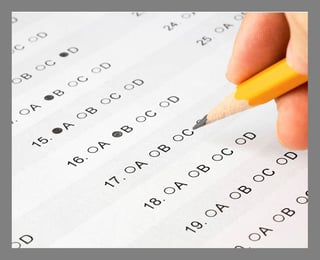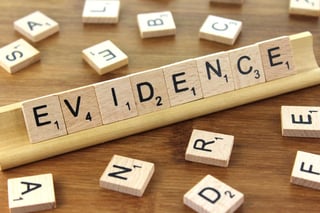 The LSAT is famous for its tight timing. Check out this timer by Alpha Score to practice your timing. Surprisingly enough, the way you bubble your answers on the LSAT holds some importance. You have to use every second to your advantage. Although it may seem counterintuitive, bubbling in bulk will actually save you precious time. As you work your way through a section, circle your answers in the test packet itself. When you reach the end of a page, turn to your answer sheet and fill in answers for that page in bulk. This way you are not wasting time moving between the test booklet and your answer sheet. Of course, you have to be very careful to pay attention to which bubble you are filling in and if it correspond to the answer you circled. When you have about five minutes left, start bubbling answers one at a time, even the questions you are skipping. If you skip a question, make note of it by making a light dash mark by the number, but fill in a bubble regardless. This is just in case you run out of time before you have time to go back and address it. A total guess is always better than a blank!
The LSAT is famous for its tight timing. Check out this timer by Alpha Score to practice your timing. Surprisingly enough, the way you bubble your answers on the LSAT holds some importance. You have to use every second to your advantage. Although it may seem counterintuitive, bubbling in bulk will actually save you precious time. As you work your way through a section, circle your answers in the test packet itself. When you reach the end of a page, turn to your answer sheet and fill in answers for that page in bulk. This way you are not wasting time moving between the test booklet and your answer sheet. Of course, you have to be very careful to pay attention to which bubble you are filling in and if it correspond to the answer you circled. When you have about five minutes left, start bubbling answers one at a time, even the questions you are skipping. If you skip a question, make note of it by making a light dash mark by the number, but fill in a bubble regardless. This is just in case you run out of time before you have time to go back and address it. A total guess is always better than a blank!
Law School News and LSAT Strategy
Stay current with the latest law school admissions news and proven LSAT strategies.
Posts by Helenka Mietka:
LSAT Tip of the Week: Understanding the Author's Premise
 The Argument Section on the LSAT requires a brain in critical thinking mode. This article by Magoosh outlines why it is such an important section. You must be able to identify the author’s conclusion, or the point they are trying to make, as well as the evidence used to support that argument. In this article we will focus on the evidence, also called the author’s premise. Let’s consider this example:
The Argument Section on the LSAT requires a brain in critical thinking mode. This article by Magoosh outlines why it is such an important section. You must be able to identify the author’s conclusion, or the point they are trying to make, as well as the evidence used to support that argument. In this article we will focus on the evidence, also called the author’s premise. Let’s consider this example:
LSAT Tip of the Week: Understanding the Author's Conclusion
The Argument Section on the LSAT requires a critically trained brain. Most importantly, you must be able to identify the author’s conclusion, or the point they are trying to make, as well as the evidence used to support that argument. In this article we will focus on the conclusion. Stay tuned for next week's tip on identifying the author's evidence, or premise.
LSAT Tip of the Week: How to Read an Argument
The Argument Section of the LSAT, also known as the logical reasoning section, is made up of 24 to 26 arguments. Helpful LSAT course sites like 7Sage usually include an...
LSAT Tip of the Week: The Arguments Section
The Arguments Section of the LSAT, also known as the logical reasoning section, tests an important skill: your ability to read critically and closely. Here is a good ...
